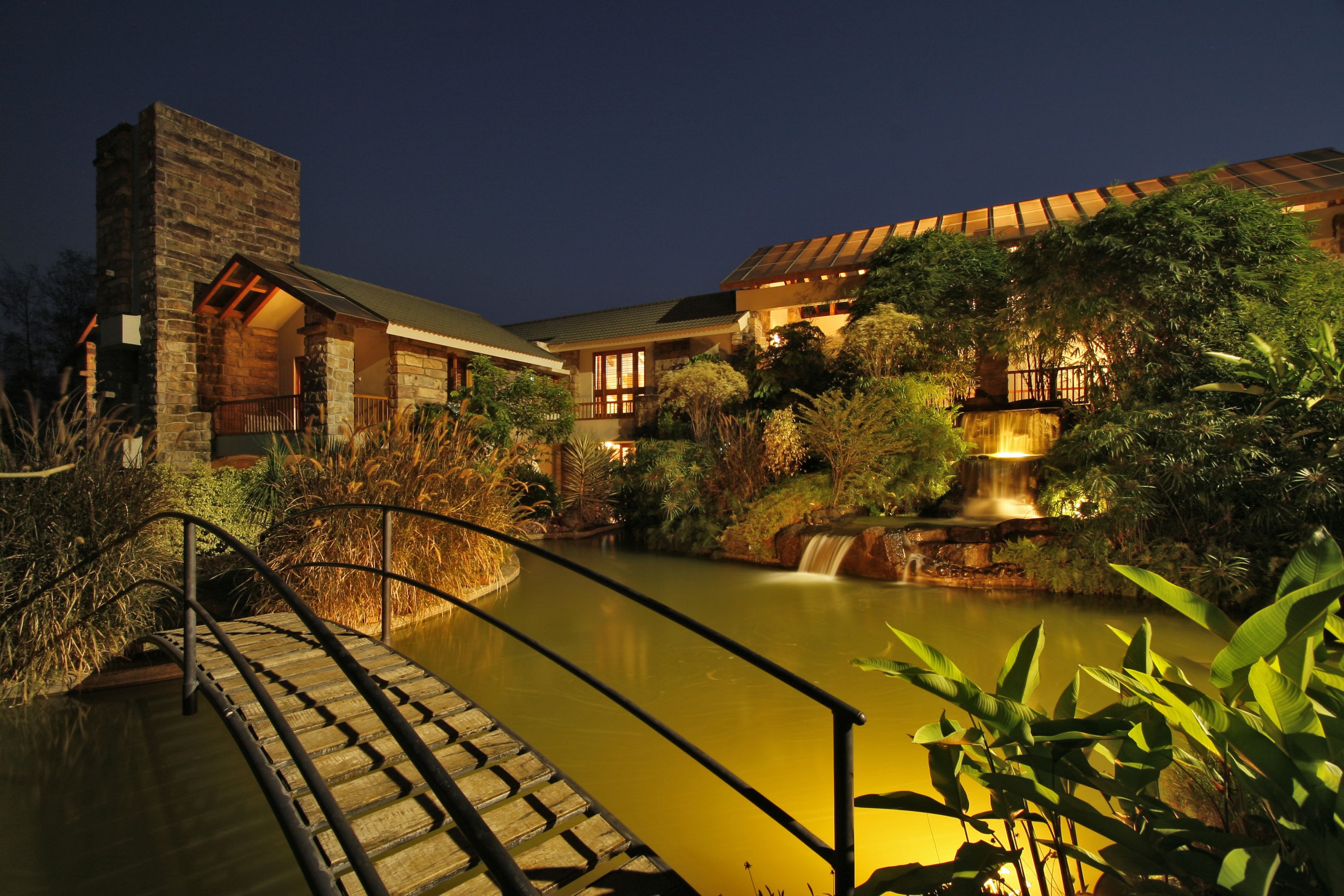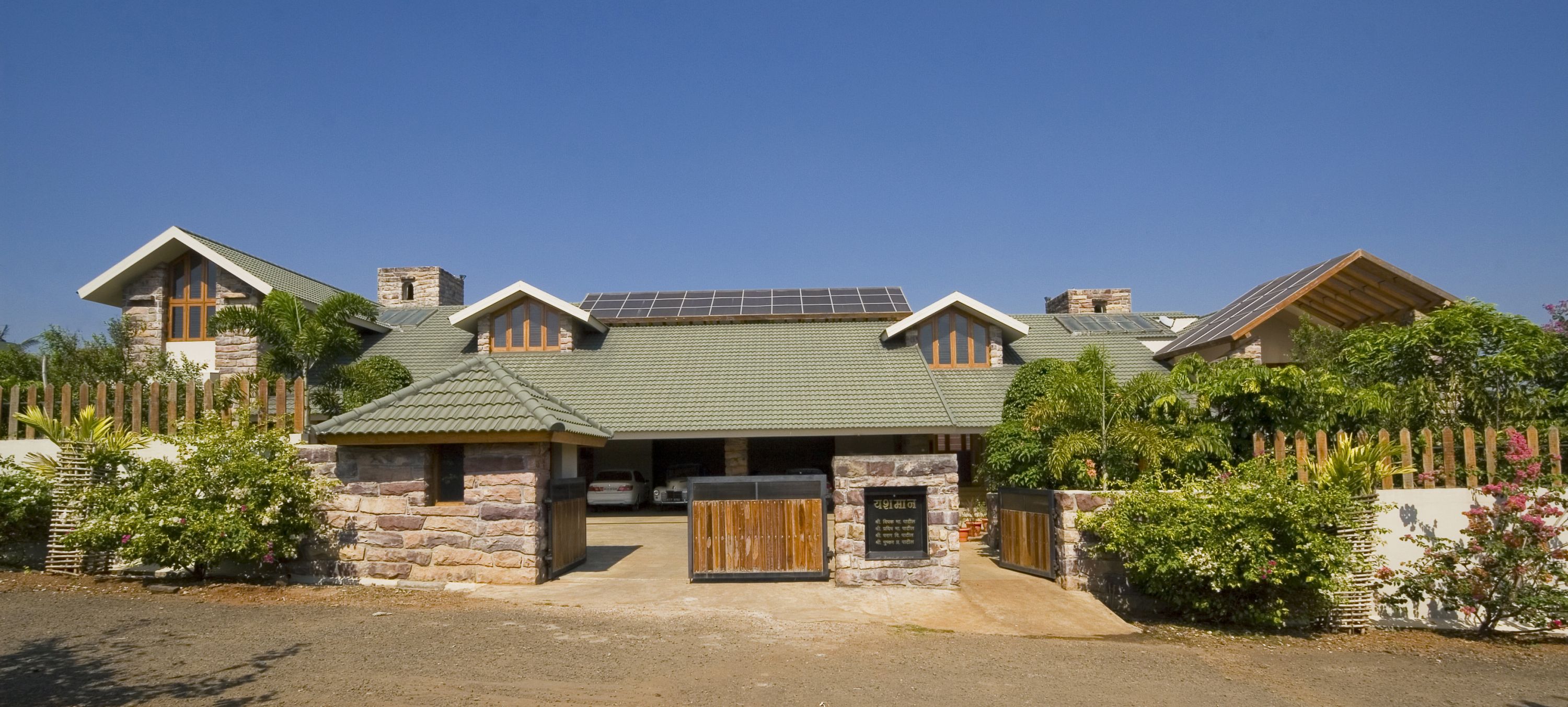It is a twin bungalow designed for brothers who are farmers . These bungalows are connected by a well designed landscape between them which houses the common interactive spaces. The main feature of the house is the landscape with the connecting lobby and water cascade around which all habitable spaces revolve. The connecting lobby houses the parking below it at ground level and creates a common space for interaction which connects the twins at upper level. It also connects to the garden at ground level in the backyard.
The landscape is designed with split levels and connects the spaces at various levels. The connecting lobby creates a strong communication between the houses. There is a huge water cascade leading from the central connecting lobby at upper level to the garden at ground level. The cascade pours into the water body which is a focal point of the garden. The water body is surrounded by the bedrooms and family spaces which makes it an integral part of the house. Most of the spaces from both the houses open out or flow into and around the landscape and water body.It is a twin bungalow designed for brothers who are farmers.
These bungalows are connected by a well designed landscape between them which houses the common interactive spaces. The main feature of the house is the landscape with the connecting lobby and water cascade around which all habitable spaces revolve. The connecting lobby houses the parking below it at ground level and creates a common space for interaction which connects the twins at upper level. It also connects to the garden at ground level in the backyard. The landscape is designed with split levels and connects the spaces at various levels. The connecting lobby creates a strong communication between the houses. There is a huge water cascade leading from the central connecting lobby at upper level to the garden at ground level. The cascade pours into the water body which is a focal point of the garden. The water body is surrounded by the bedrooms and family spaces which makes it an integral part of the house. Most of the spaces from both the houses open out or flow into and around the landscape and water body.










